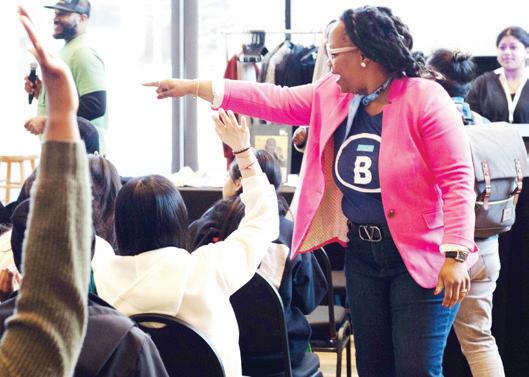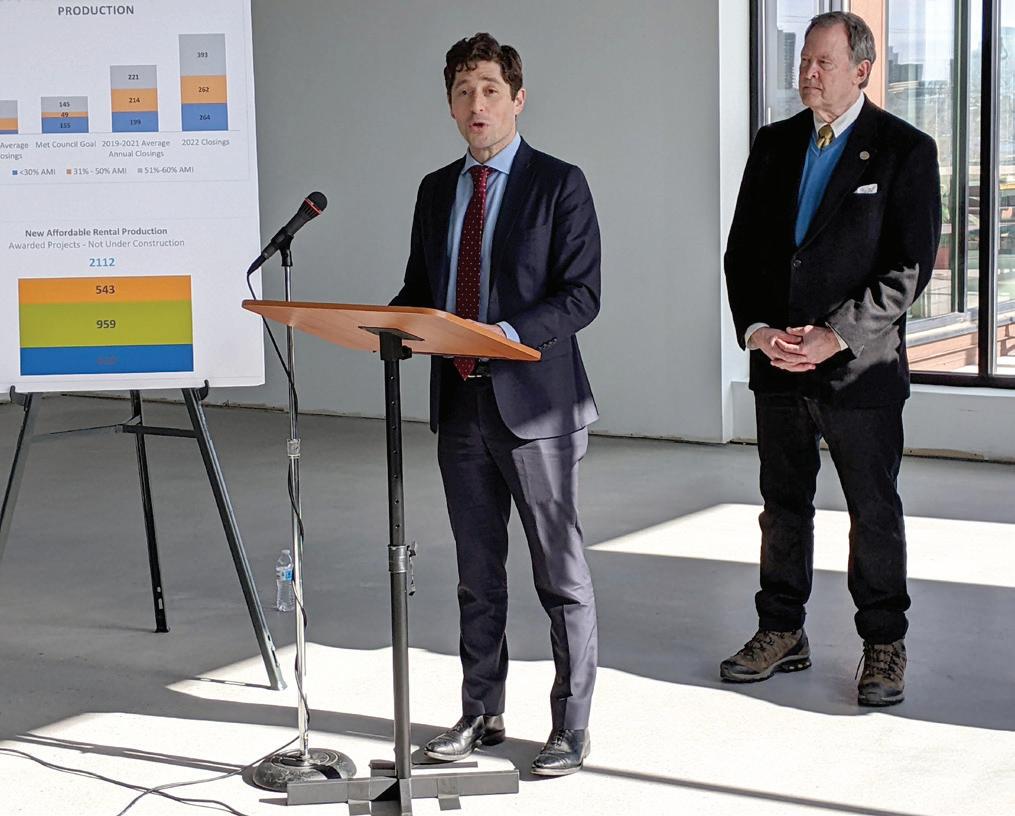
4 minute read
NAACP lawsuit reveals MPD’s decade-long history of discrimination
By Charles Hallman Staff Contributor
In a lawsuit filed last month by the Minneapolis NAACP, the organization alleges that the Minneapolis Police Department (MPD) used social media to spy on local members as part of an orchestrated, decade-long campaign of harassment to undermine local activists.
The University of Minnesota Law School’s Racial Justice Law Clinic (RJLC) and the Law Office of Tim Phillips jointly filed the lawsuit on behalf of the Minneapolis NAACP, accusing the MPD of using covert social media accounts to surveil the NAACP and its members.
The RJLC released a statement on April 27, noting that “this racially discriminatory surveillance … was unconstitutional, violating the plaintiff’s First Amendment right to free expression and Fourteenth Amendment to be free from racially discriminatory policing.” It also alleges federal and state legal claims under Title VI and the Minnesota Human Rights Law.
The lawsuit, which is seeking both monetary and punitive damages from both the MPD and the City of Minneapolis is the result of findings from a 2022 Minnesota Department of Human Rights (MDHR) report that showed MPD misconduct for at least 10 years, which included officers posing as Black community members and went on social media to interact, criticize, and harass the NAACP and its members.
The nearly 150-page report later led to a consent decree with MDHR and the City of Minneapolis. However, the consent decree does not provide relief to the Minneapolis NAACP for the alleged surveillance of the organization and its members.
“We’re looking for accountability. We felt like a lawsuit would hold somebody accountable,” Minneapolis NAACP President Cynthia Wilson told the MSR.
“The secret spying was damaging on many levels, including creating fear among community members,” Wilson said. Along with the police department, she believes other city officials should be held accountable as well, including current Mayor Jacob Frey.
members and other Black leaders is similar to tactics employed by the FBI against leaders of Black organizations during the Civil Rights era and the Black Panther Party in the 1960s and 70s.
Minneapolis weighs rent stabilization
With Twin Cities housing more affordable than other urban areas, will it stay that way?
By Cole Miska Contributing Writer
ered by the ordinance.
“People have to be held accountable,” said the Minneapolis branch president. “I know sometimes people want to dance around the truth, but I am not dancing.”
According to RJLC Associate Professor Liliana Zaragoza, “We don’t know the date range of the surveillance because the Minnesota Department of Human Rights looked at 10 years of data. So, we don’t know if it started 10 years ago or if it went on and off.”
MPD’s alleged spying on NAACP

CORRECTION:
In “Divide and Conquer: Park Board’s plan for Hiawatha” (May 11, 2023 edition), Darwin Dean, president of the Bronze Foundation, clarified his quote regarding the cost of the Park Board’s Hiawatha plan: “They are seeking $65 million today. However, with inflation, in five to eight years that amount could be as high as $90 million
[not $90 billion as originally reported].”
Robin Smother, a spokesperson for the Minneapolis Park and Recreation Board (MPRB), said the estimated cost for the Hiawatha plan is $43 million.
In addition, the Park Board vote on the Hiawatha Master Plan was 6-3, in favor, [not 4-3, as reported].
But Zaragoza pointed out, “I think what is different is it was federal investigations. So here, it might be local to the extent we know [but] we don’t know if MPD collaborated with anybody else.” The lawsuit alleges that MPD also used a covert account to “pose as a community member and RSVP to attend the birthday party of a prominent Black civil rights lawyer and activist.” The lawsuit states that the activist was Nekima Levy Armstrong.
“At the time of the birthday party in June 2017, Ms. Armstrong was a mayoral candidate in the City of Minneapolis openly running on a police accountability platform. She recalled several MPD officers showing up in uniform to the event and ultimately shutting down the party early as a result of the officers’ presence.”
“What they [MPD] were trying to do was create a level of fear, trying to create division within the organization and to stop the moment,” Zaragoza reiterated. “There must be something else done to show serious ramifications for their actions so that it doesn’t happen again. And this lawsuit is the only way that I believe that that will happen.”
“The Minnesota Department of Human Rights report said that the MPD social
The 2020s have thus far been a volatile decade for housing prices in large cities in the United States, with the Twin Cities being no exception. After a steep drop in rental prices due to the Covid-19 pandemic in late 2020, rents in Minneapolis have held fairly steady according to Apartment List, a website that tracks rental data nationwide. Since January, median rent rates in Minneapolis are up 1.6 percent, but down 0.8 percent when compared to April of last year.
In 2021, Minneapolis residents voted to authorize the City Council to enact a rent control ordinance. Yet almost two years later, the council has not passed any such ordinance.
While Minneapolis does
Out of the 100 largest cities, Minneapolis had the 87th lowest median rental rates at $1,092 a month, while St. Paul ranked 88th with $1,082 a month. This put the Twin Cities metro area median rent at approximately $300 more expensive than the cheapest of the 100 largest cities (Cleveland, OH, at $796), but almost $2,000 cheaper than the $3,028 median rent rates in Irvine, CA. Minneapolis ranked slightly lower than the average monthly residential rent increase for large U.S. cities at 0.3 percent, while St. Paul matched the national average of 0.5 percent increase.
Both Minneapolis and St. Paul have a lower median rent for one-bedroom apartments than many surrounding suburbs, including St. Louis Park ($1,315), Edina ($1,420), not have rent control, St. Paul’s rent stabilization policy has been in effect for just over a year. However, an amendment to the ordinance stripped away rate protections forr some renters, but the Minnesota Youth Collective (MNYC) says that approximately two-thirds of St. Paul renters are still cov-
Bloomington ($1,181), Woodbury ($1,591) and others.
Last month, Minneapolis released an analysis recommending against rent stabilization measures, saying the city “should continue supporting, and explore deepening investment, in known
See RENT on page 5










